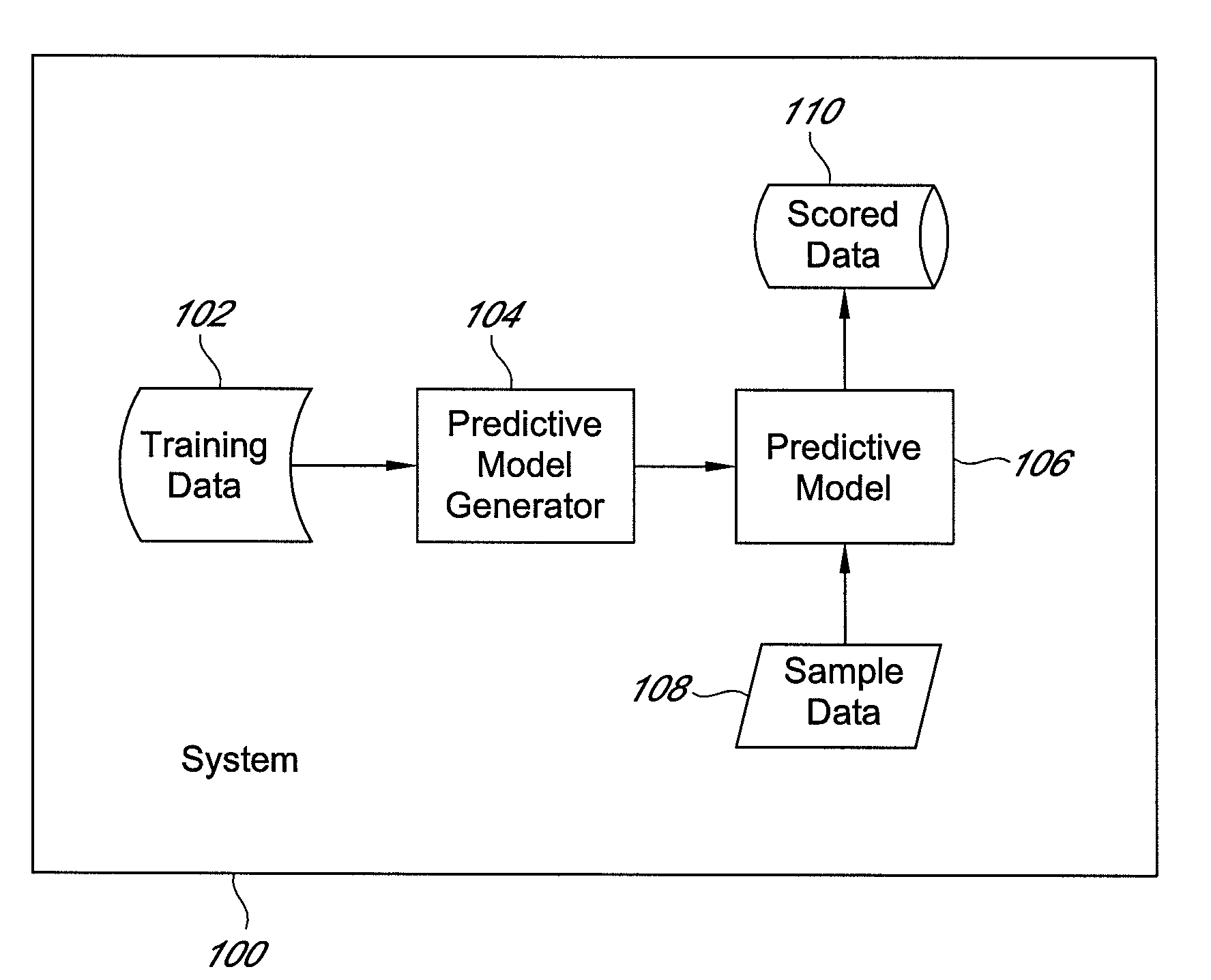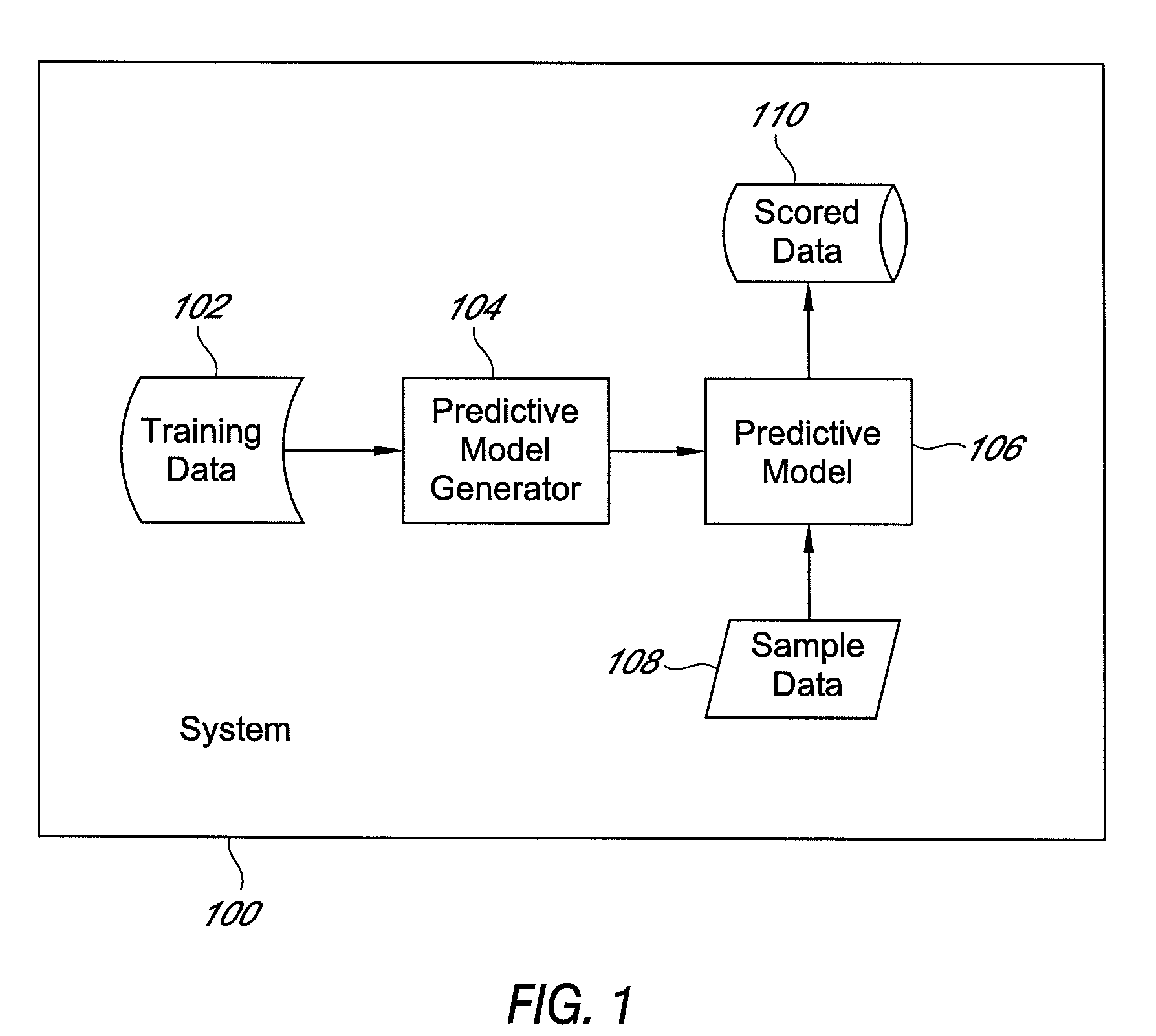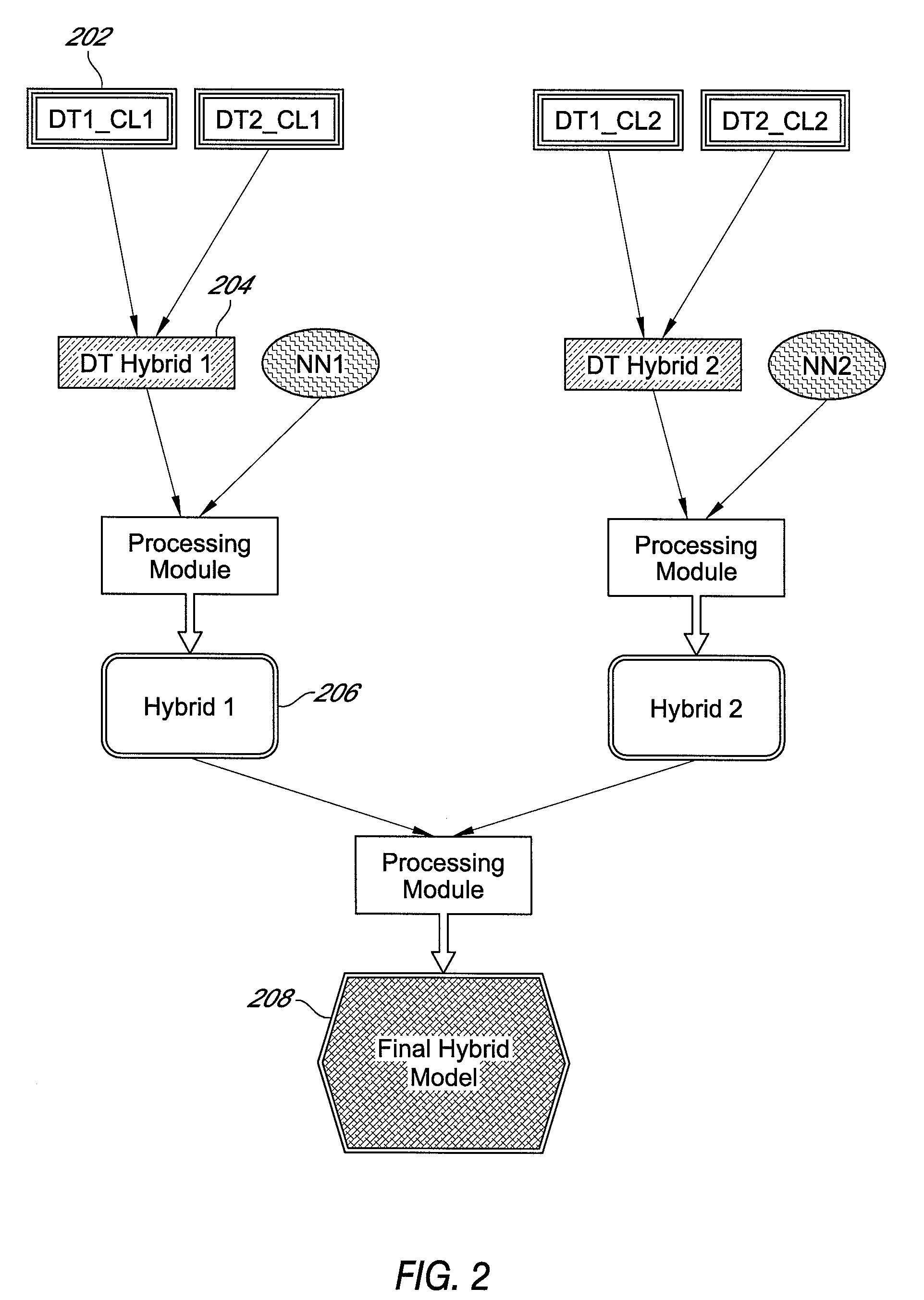Method of selecting an active oligonucleotide predictive model
a predictive model and oligonucleotide technology, applied in the field of antisense oligonucleotide activity, can solve the problems of large amount of data, large number of oligonucleotides that must be synthesized, and limited performance, and achieve the effect of facilitating the selection of a predictive algorithm
- Summary
- Abstract
- Description
- Claims
- Application Information
AI Technical Summary
Benefits of technology
Problems solved by technology
Method used
Image
Examples
example 1
[0142]After testing a variety of data mining methods, the decision learning induction method to predict oligomer activity was selected for study. As is known by those of skill in the art, decision trees are typically used for inductive inference and can approximate discrete value functions. In comparison to neural networks, regression trees and other methods, the decision tree method is very successful at learning patterns in data in the given dataset, as well as presenting the output in a readable form. The output model of a decision tree learning method is a tree having a hierarchy of attributes, each of which splits the data in the best way at that point in time (the tree is built from the root down), and the leaves that classify the oligomer instances.
[0143]After initial cleaning and filtering of a part of the Isis Pharmaceuticals proprietary screening data, the data was classified into two categories: Active and Inactive, and was ready to train. In the training and learning pha...
example 2
Using ‘Flex’ Motifs in Predictive Modeling of Antisense Oligonucleotides
[0146]In the previous Example is presented an approach that included the energies as well as motifs, in addition to several other descriptors that helped build a more efficient predictive model of oligo activity. Moreover, a decision tree induction model that gives a human-readable output in the form of a hierarchical tree. This example evaluated to predicting 66% of correctly classified oligos, tested using 10-fold cross-validation.
A tetramotif is a four NT long subsequence in an antisense oligo sequence. The motif analysis of Isis Pharmaceuticals' data gave a list of more than fifty motifs that are positively and negatively related to oligo activity. We used this list of motifs as a part of the input into the decision tree learning schema to help us build a predictive model. There were a total of 88 attributes that were input to the model.
[0147]Reduction of attribute space, provided the predictive ability of t...
example 3
The Relevance of Features in Predictive Modeling of Antisense Oligonucleotides
[0175]This Example incorporates Features into the logic used in previous Examples.
[0176]The features included exon, intron, start, stop, 3″UTR, 5″UTR and others (FIG. 1). An algorithm was devised for scoring the oligos based on whether they are designed to overlap a feature. The algorithm is feature-length dependent, and basically reflects the number of bases that overlap with the feature. Following is the list of features used:
TABLE 3.1The list of DNA Structural Features Usedin Predictive Modeling of Oligo ActivityCDSstartstoptranscriptional start5′UTR3′UTRexonintronexon:exon junctionexon:intron junctionpolyA signal
[0177]After adding the new features attributes to the dataset, a variety of experiments were performed searching for an optimal model by varying the architecture and list of parameters. The input to the decision tree induction method consisted of: oligo sequence information, flex motifs, free e...
PUM
| Property | Measurement | Unit |
|---|---|---|
| hydrogen-bonded structure | aaaaa | aaaaa |
| target nucleic acid folding calculations | aaaaa | aaaaa |
| nucleic acid folding calculations | aaaaa | aaaaa |
Abstract
Description
Claims
Application Information
 Login to View More
Login to View More - R&D
- Intellectual Property
- Life Sciences
- Materials
- Tech Scout
- Unparalleled Data Quality
- Higher Quality Content
- 60% Fewer Hallucinations
Browse by: Latest US Patents, China's latest patents, Technical Efficacy Thesaurus, Application Domain, Technology Topic, Popular Technical Reports.
© 2025 PatSnap. All rights reserved.Legal|Privacy policy|Modern Slavery Act Transparency Statement|Sitemap|About US| Contact US: help@patsnap.com



